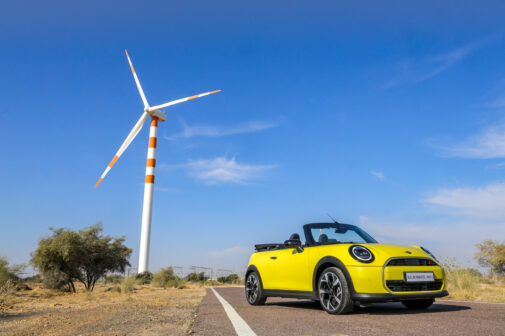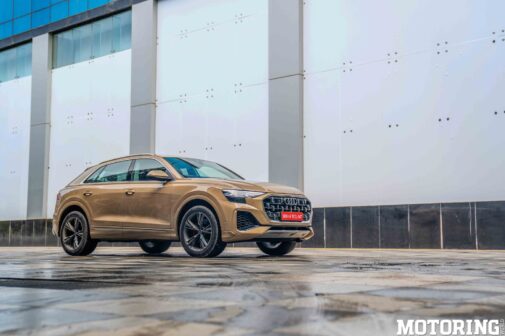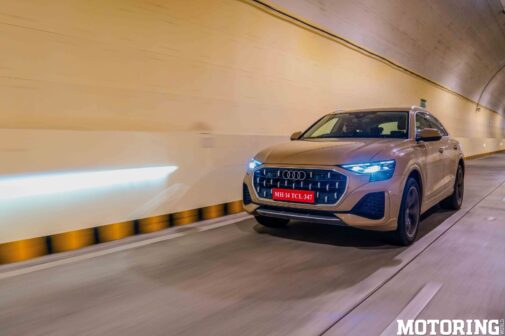Photographs by Siddharth Dadhe
Here we have the Audi Q8, and where do we begin? Let’s set aside the jokes about it being the budget Lamborghini Urus. It certainly looks the part. Even in its standard form — not the more aggressive RS variant — this SUV boasts an imposing stance. If you squint closely, you can spot design cues reminiscent of its sibling from Lamborghini, particularly in the sharp lines that echo the Urus. That’s definitely a plus.
Any vehicle that shares a resemblance with a Lamborghini is a winner in my book. This model exudes character and presence, especially when compared to other Audi offerings that often blend into traffic. The commanding road presence is undeniable, making this luxury SUV stand out in any setting. Audi’s SUV lineup in India is impressive, offering a range from the compact Q3 to the flagship model. The latter has become quite a favourite among cricketers and Bollywood celebrities, often spotted around Mumbai in various bold colours.
As a flagship model for the brand, this SUV certainly commands attention with its striking design. The front features a newly enlarged grille, sharper than its predecessor, accented by a sleek silver skid plate below. The HD Matrix LED headlights are a standout feature, now equipped with laser–assisted high beams, creating a stunning visual when the vehicle starts. The side profile retains the iconic silhouette while the 21–inch rims, complete with eye–catching red brake callipers, elevate its sporty appeal. Although the rear has not seen major changes, it still boasts the signature light bar design that adds to its distinctive look
Now, let’s talk about the unique colour offered, officially named Sakhir Gold Metallic. I would describe it more as a sand dune hue, fitting for a vehicle that embodies a ‘Habibi spec’ or, to be more politically correct, a Middle Eastern spec. This colour truly sets it apart and definitely turns heads. Interestingly, our office is located in BKC, Mumbai, directly opposite the Trident Hotel, and the exterior of the hotel matches this Audi’s colour perfectly, making for a striking visual capture.
This spec car features thoughtful details, such as puddle lamps showcasing a lizard beneath the Audi logo, enhancing its desert theme. After exploring the exterior, it was time to step inside and get acquainted with the interior. Audi’s design language remains consistent across models, whether you’re in an A8 or an electric SUV. While this familiarity may limit customisation options, it also means that adapting to the interface is seamless and intuitive.
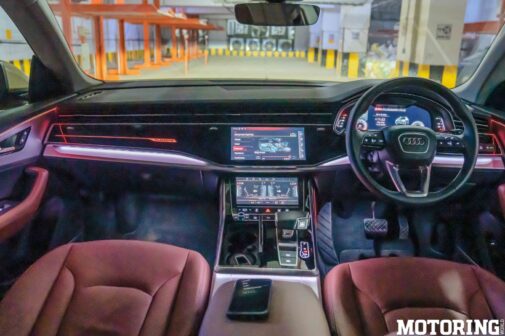
Inside, you’ll find an array of touchscreens and panels. The main infotainment screen controls most of the vehicle’s functions, from switching drive modes to connecting your Bluetooth or Apple CarPlay. What stood out to me was the lower screen’s haptic feedback; it adds a tactile element that many manufacturers should consider adopting. When adjusting the temperature or fan speed, the responsive feedback enhances the user experience. However, one area that feels a bit outdated is the virtual cockpit. While Audi has utilised this feature for some time, the resolution could use an upgrade, as competitors have transitioned to higher–resolution displays. Nevertheless, the virtual cockpit’s UI/UX remains one of the best in its class, particularly with its map feature. Zooming out reveals a detailed virtual landscape, although the map does need updating to include recent infrastructure projects like the newly Mumbai Coastal Road.
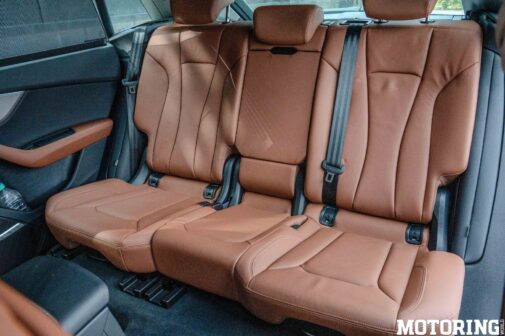
What really impressed me was the gear selector; it feels like you’re at the helm of the Starship Enterprise. With a solid, chunky feel, shifting into Drive makes you feel ready for warp speed. The overall seating position is excellent, providing ample cabin space expected from a flagship model. Moving to the rear seats, there’s plenty of legroom, and despite the sloping roofline, headroom remains generous.
Audi continues to impress by retaining a physical volume button, a significant advantage in high–end cars where many manufacturers have shifted to touch controls. This model also features a Bang & Olufsen sound system with 3D audio functionality, delivering an exceptional listening experience. The sound is crisp, even at lower volumes—an important test for any premium audio system. Unlike many who simply crank up the bass, true quality is evident when you can appreciate the clarity of notes at lower levels, and this system certainly delivers.
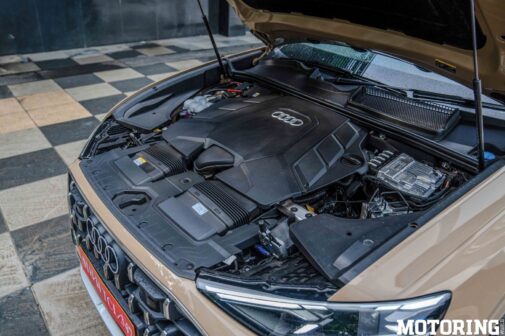
The motor excels in delivering a smooth and refined performance. Equipped with a 3.0–litre TFSI petrol engine and a 48V mild hybrid system, it produces a combined output of 335 hp and 50.98 kgm of torque, which is distributed to all four wheels via an 8-speed automatic transmission. During our time in and around BKC, we decided to test its capabilities on the newly opened coastal road. Setting out from the office, we aimed to reach Nariman Point, navigating through the scenic Bandra-Worli Sea Link and onto the elevated sections of the coastal road. As we entered the tunnel, I cracked the window and pressed down on the accelerator to experience the V6 engine’s sound, which was surprisingly satisfying for an SUV, especially considering it’s not a full–fledged RS model.
I’m pleased to report that we made the journey from BKC to Nariman Point in just 16 minutes, a remarkable feat given the minimal afternoon traffic. Without the new coastal road, this trip would typically take around one and a half hours. In terms of performance, the vehicle boasts a 0–100 kph time of just 5.6 seconds, showcasing its linear power delivery. The top speed is electronically limited to 250 kph; in any case, in a city like Mumbai, there’s no chance of getting anywhere close to that number. Having tested its performance, the overall ride and handling truly impress. As a flagship model, it naturally excels in ride quality, smoothing out bumps effortlessly—a credit to the large tyres. Even rear–seat passengers enjoy a comfortable experience, while the vehicle’s commanding presence makes it feel surprisingly easy to manoeuvre. On the highway, the confidence provided by the Audi all–wheel–drive system is palpable; corners can be navigated at much higher speeds than you might expect, and the grip from all four wheels instils a reassuring sense of security, especially on a rainy day in Mumbai.
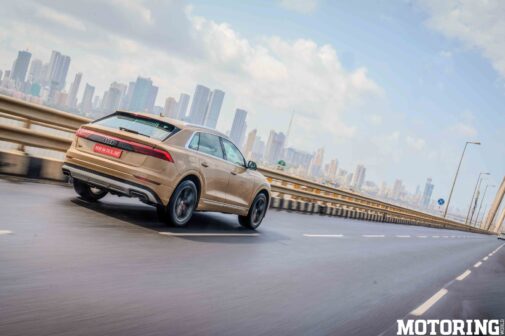
that Audi delivers
What really stands out is the exceptional refinement that Audi delivers. The cabin is remarkably quiet, free from any rattles, creating a serene environment that enhances the driving experience. You feel relaxed behind the wheel, and even when tackling corners, the body maintains composure with minimal body roll, showcasing the excellent engineering that defines this luxury SUV.
With its competitive pricing, Audi has taken an aggressive stance in the flagship SUV segment, especially with the standard model priced at Rs. 1.17 Crore (ex-showroom), excluding the RS variant. When looking at the competition, particularly the GLE AMG 53, which comes with a significantly higher price tag, the Q8 emerges as an attractive value proposition. Although the X6 is currently unavailable in India, the Q8’s new subtle updates and features make it an enticing option for buyers. If you’re in the market for a luxury premium coupe, this model should definitely be on your radar.









